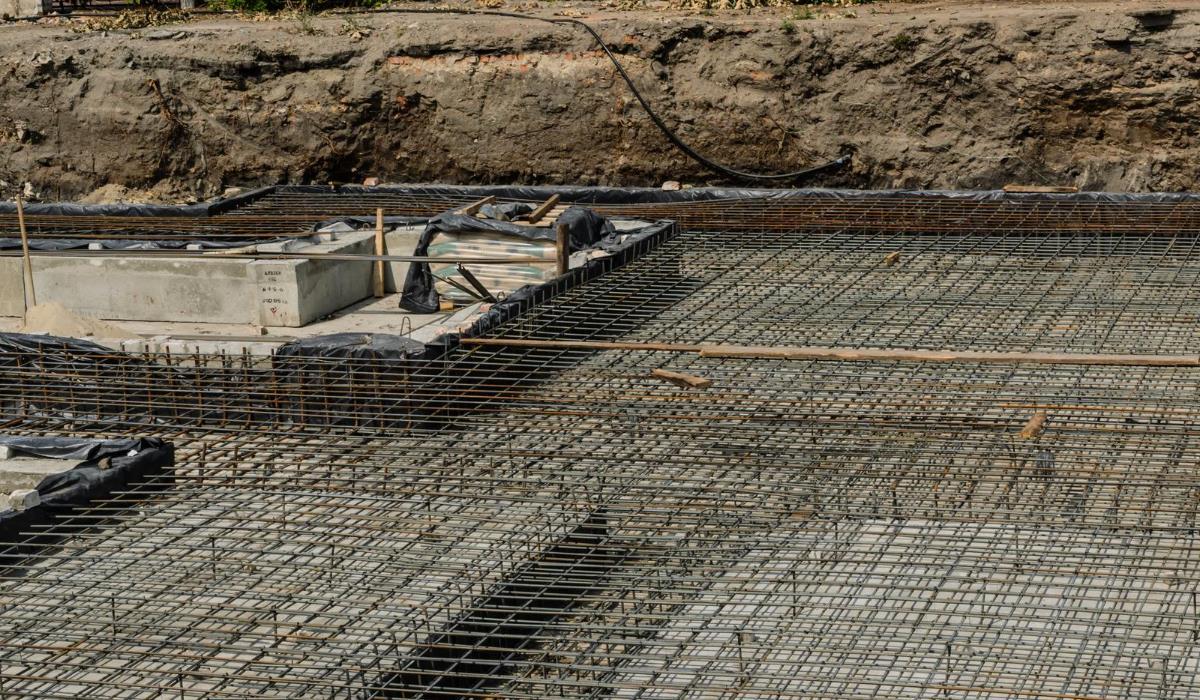The concrete reinforcement process is a key stage of every construction, having fundamental importance for the durability and stability of the structure. In this article, we will discuss various aspects related to concrete reinforcement, from the types of reinforcement to the techniques of its implementation and the most common mistakes made during this process. Concrete is a material with great potential, but also sensitive to cracking and other damage. Therefore, it is necessary to strengthen it using steel reinforcing bars. These rods are immersed in concrete, which makes the structure more durable and resistant to loads.
Types of concrete reinforcement
Reinforcement is used primarily in:
- Footings: Reinforcement of footings is intended to increase their strength and stability. Reinforcing bars are placed inside the concrete, creating a skeleton that prevents cracking.
- Ceiling ring: It is used on the upper part of the building walls to strengthen the structure and give it stability.
- Window and door lintels: Reinforcing lintels is essential to prevent cracks and damage in these key areas.
Types of reinforcement: load-bearing and supplementary
We can distinguish two main types of reinforcement: load-bearing and supplementary. Load-bearing reinforcement is primarily intended to increase the strength of the structure, taking into account the loads. This is the basic reinforcement. Supplementary reinforcement only reinforces the load-bearing reinforcement and is not used alone. When reinforcing concrete, it is important that the bars are permanently connected. This can be done by welding, welding or bonding with wires. Today, ready-made reinforcement elements are often used, such as straight or bent steel reinforcing bars, reinforcing meshes or semi-prefabricated reinforcement elements. Each reinforcement element must meet certain parameters, such as steel class, grade, diameter and length.
The most common mistakes in concrete reinforcement

Many mistakes can be made when reinforcing concrete, which may affect the quality and durability of the structure. The most common of them are:
- Incorrect overlap length: An overlap that is too short or too long may affect the strength of the structure and cause cracks.
- Too short anchoring: Insufficient anchoring of the bars may lead to deflections and weakening of the structure.
- Omission of primers: Starters are elements of reinforcement that are often omitted and can increase the cost of work.
- Incorrect number of bars in the cross-section: Too few or too many bars may affect the strength and durability of the structure.
- Loss of continuity of reinforcement: Improper installation of reinforcement may result in a break in the continuity of the bars in the concrete, which is dangerous.
- Incorrect location of reinforcement: Reinforcing bars must be located exactly where the designer indicated.
- Lack of protection against displacement: The reinforcement in the formwork must be secured against displacement.
- No additional reinforcements: In the case of ceilings, the reinforcement should be reinforced with distribution ribs and support reinforcement in the support zones.
Concrete reinforcement is an extremely important process for the durability and stability of the building. It is worth investing in appropriate materials, techniques and employee training to avoid mistakes and achieve a durable and safe structure. The quality of the reinforcement translates into the quality of the entire building, so it cannot be underestimated.



